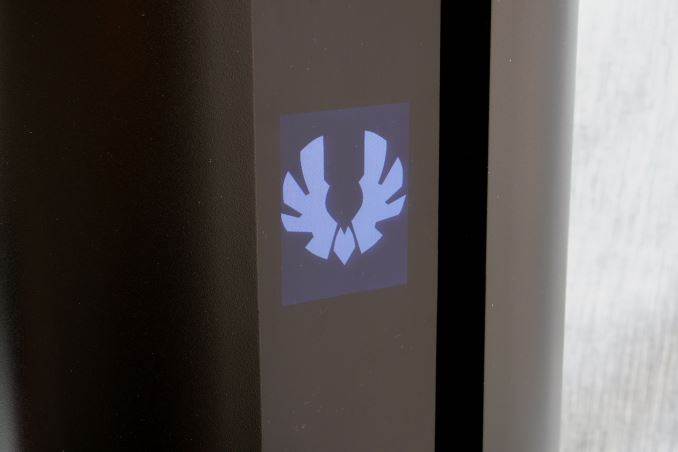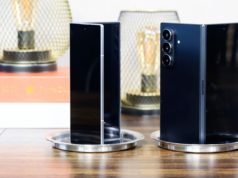BitFenix is a company that is strongly focused on the design of PC cases and the supply of case modding parts. They currently produce over two dozen cases, covering nearly all segments of the market, with most of them being marketed as visually unique cost-effective designs. Many of their products have been through our labs, from the $39 Merc Alpha to the $159 Shinobi XL, each with its own target group, strengths, and weaknesses. Today we are looking at the latest design – a scaled up version of the Pandora.
BitFenix owes a lot of their recent success as a company to the Pandora. It is a case that was loved for its design and price to performance ratio. However, the Pandora was compact and could only take up to Micro ATX motherboards, with limited expandability and cooling options. In this review we are having a look at a newer version of the Pandora, the Pandora ATX, which shares the aesthetic design of the original Pandora but is both much larger and comes with extensive support for liquid cooling systems.
Tthe Pandora was BitFenix’s first case with aluminum parts and designed to combine aesthetics with versatility. The original Pandora was designed for Micro-ATX and Mini-ITX motherboards only, something that was a deal breaker for many advanced users and gamers, but did not stop the case from succeeding in the market. As such, BitFenix decided to design an oversized version of the Pandora, the Pandora ATX, as a case with a similar aesthetic design but large enough to support ATX motherboards and advanced liquid cooling systems. We are having a thorough look at it in this review.

| BitFenix Pandora ATX | ||
| Motherboard Size | ATX, Micro-ATX, Mini-ITX | |
| Drive Bays | External | – |
| Internal | 4 × 3.5″ 4 × 2.5″ |
|
| Cooling | Front | 3 × 120 mm or 2 x 140 mm (1 × 140 mm included) |
| Rear | 1 × 120 mm (included) | |
| Top | 3 × 120 mm or 2 x 140 mm (none included) | |
| HDD | – | |
| Bottom | – | |
| Radiator Support | Front | Up to 360 mm or 280 mm |
| Rear | Up to 120 mm | |
| Top | Up to 360 mm or 280 mm | |
| Side | – | |
| Bottom | – | |
| I/O Port | 2× USB 3.0, 2× USB 2.0, 1× Headphone, 1× Mic | |
| Power Supply Size | ATX | |
| Clearances | HSF | 160 mm |
| PSU | 240 mm | |
| GPU | 440 mm | |
| Dimensions | 510 mm × 203 mm × 558 mm 20.08 in × 7.99 in × 21.97 in |
|
| Prominent Features | · 2.8″ BitFenix ICON™ Display · One-piece powercover and MB tray · Top, Front and Bottom Dust Filters · 360mm Radiator Support · 20mm Cable Clearance · Graphics Card Length up to 440mm |
|
| Price | $112 | |
We received the Pandora ATX supplied inside a large and fairly sturdy cardboard box. The case is protected inside the box by two thick Styrofoam slabs and a nylon bag, providing adequate shipping protection. Aesthetically it may be just a brown box, but BitFenix spent some effort and resources trying to make it appealing via simple geometric artwork and a schematic of the case itself.

The items bundled alongside with the Pandora ATX are fairly standard, with the exception of a metallic brace that can be installed to give the rear of the chassis a rounded appearance. The rest of the supplied items are for the installation of devices and parts inside the case, a few cable ties, and a thick metallic company logo. As this case has an LCD installed, BitFenix thoughtfully decided to leave the installation of the case badge up to the user.

The BitFenix Pandora ATX sports the same modern design that made the original Pandora famous, with smooth surfaces and side panels that extend to the front of the case as flaps. The design concept is not new as there were a few cases similar to the Pandora in the past (e.g. ThermalTake Armor), but the Pandora was the first where the flaps were a continuous part of the side panels, combined with having no external drive bays at all. The newer version that we are reviewing today is considerably larger than the original, measuring 51 cm tall, 20.3 cm wide and 55.8 cm deep (20 × 8 × 22 in), resulting to a volume of 57.8 liters, making it 40% larger than the mATX-compliant Pandora. It is also a slightly heavy case, tipping our scales at 9.72 kg when completely empty.
 11.2 oz can inserted as a size reference
11.2 oz can inserted as a size reference
BitFenix has designed only a single black version of the Pandora ATX at this point, with a windowed side panel. A smooth, satin black paint covers the entirety of the case with the sole exception being the glossy plastic front panel. The paint is relatively resistant to fingermarks but the glossy front panel is a true fingerprint magnet and can get dirty very easily. As there is nothing the user can physically interface with on the front panel, it should not be an issue, unless if there are young children or pets roaming about the area of the PC.


The front I/O ports and buttons can be found at the top side of the front panel. A large power on button can be seen on the far left side of the symmetrical array, followed by two USB 3.0 ports, 3.5mm audio jacks at the center, two USB 2.0 ports to the right and a large reset button to the far right. There is no door or cover for the USB/audio ports.

A look at the rear of the BitFenix Pandora ATX reveals that the PSU compartment is at the bottom of the case and the presence of a stock 120 mm exhaust fan. There are also two round holes with rubber grommets for liquid cooling hoses. The metallic brace that BitFenix supplies with the bundle goes in front of the PSU, exactly as the brace that can be seen pre-installed at the top of the case’s rear side.

The BitFenix Pandora ATX sits on four simple, round plastic legs with rubber anti-slip pads installed on them. With the exception of the nylon filter covering the PSU intake, there is nothing else of interest at the bottom of the case. The front air intake filter can also be removed by pulling it downwards from the gap between the chassis and the faceplate, something easy to be done with the case on a desk or table but requires the case to be lifted up or rolled to its side if it sits on the floor.

One unique feature of the Pandora ATX is the simple LCD screen on the front panel. By default, it is showing the company logo but the users can insert any photo/logo they wish, as long as it fits certain proportions and file formats. The software used to do this is very simple, perhaps even too simple for such a product. It has no interface at all, the user is simply required to drag and drop the picture file on the program’s icon. A little more sophisticated software with a basic user interface and minor editing options would certainly be much more effective.

The removal of the case’s panels reveals a relatively roomy but complex interior. BitFenix has sprayed the interior of the Pandora ATX with a matte black paint. The paint job is excellent but this particular paint is highly prone to fingermarks. Aside from the chassis and other metal parts of the case, everything inside the Pandora ATX is black, including the fans, the cables and every single screw and stand-off.

There is an opening on the motherboard tray for the installation of aftermarket CPU coolers, large enough to offer compatibility with most motherboards, yet not overly so as to expand beyond the limits of a Flex-ATX motherboard. Openings for the routing of cables can be seen to the right and below the motherboard area. Simple but effective rubber grommets cover these openings. There is another very large opening at the top right side of the system area, without a cover.

The installation of drives inside the Pandora ATX is being done on metallic trays found throughout the case. We found three 3.5” drive trays inside the bottom compartment near the front of the case, with two of them being at the bottom of the case and one at the top of the compartment. Another 3.5” drive tray is within the system area, right beneath the motherboard. The four 2.5” trays can be found to the front of the motherboard tray, two on either side of the case. It is interesting to note that the 2.5” trays inside the system area can be exchanged with 3.5” trays if the user wants to. 2.5” devices can also be installed on the 3.5” trays if needed.




The installation of the drives on the 3.5” trays is done by inserting rubber grommets on them and then securing the drive using the provided screws. As 2.5” drives do not really vibrate, BitFenix kept the 2.5” trays very simple and the drive is directly secured on the tray with typical screws.


Note that the 2.5” trays just look like they can take the device inside them – the 2.5” drive will not fit inside the tray, it is meant to be installed on it. BitFenix wants the drive to be visible when viewed from a windowed side panel.


The strange metallic mount at the bottom of the system area is a liquid cooling pump mount. BitFenix claims that it can hold every pump meant for a PC cooling setup available today. Even if a pump is not directly compatible, drilling an extra hole or two should be a cakewalk for a modder. A soft anti-vibration pad is installed on the mount to help reduce the possibility of vibration-induced noise from the pump. The concept is very interesting but the position of the mount can be problematic with a multi-GPU system, as it can block the installation of a card depending on its length and installation slot.
The top panel of the case can easily come off by simply pressing down on it. Here the user can install up to three 120 mm or two 140 mm fans and relatedly sized radiators. There is enough space between the top cover and the installation mounts for the vast majority of liquid cooling radiators available today, but we would not recommend some of the proprietary models that may be over 40 mm thick. A metallic brace can also be noticed and it is meant to serve as a mounting point for liquid cooling reservoirs,…

![[Design Story] One UI Helps You Live Life Your Way – Samsung](https://loginby.com/itnews/wp-content/uploads/2025/11/1763476351_Design-Story-One-UI-Helps-You-Live-Life-Your-Way-238x178.jpg)




